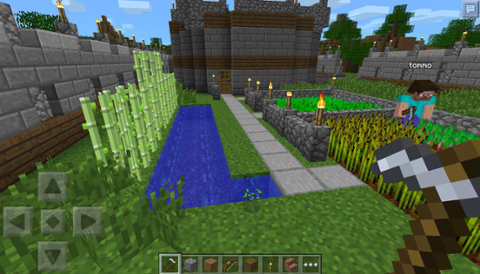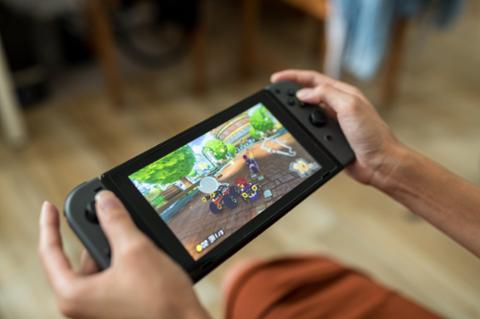Lewis Pulsipher's name should be very familiar to game players of the past 30 years. He's had several games published, including
Britannia — ranked in the top 100 games — as well as
Dragon Rage,
Valley of the Four Winds,
Diplomacy variants, RPG material and others. He also teaches college-level game-design classes in North Carolina.

More recently, Pulsipher published
Game Design: How to Create Video and Tabletop Games, Start to Finish. This 260-page paperback is focused solely on a topic that isn't well-covered elsewhere. The book doesn't address intellectual property or 3D programming, but it does include a broad philosophy of game design. If you want to learn how to design games, then you are the target audience. Count me in as well! The first chapter jumps straight into the deep end and discusses where ideas come from and how to generate them. A key point is that many ideas are worthless and can't be copyrighted, but are still a starting point. It's not at all easy to take an idea and end up with a classic game. In chapter two, Pulsipher makes the point that you should play tabletop or board games, including war games to gain insights into game design, rather than beginning with video games. He examines popular games to see what lessons can be learned from them.
What Games Are
Chapter three looks at what a game is, and what makes a good one, a great one, or even an epic one. He also discusses flow: when games challenge a player enough to be interesting, but are neither too easy nor too difficult. And here's a little gem about gender considerations:
If you’re designing a game whose primary target audience is female (e.g. many social network and casual games), keep in mind that in games women tend to be more interested in the journey, males more interested in the destination.
Chapter four explores different playing styles and asks important questions of you, the designer. Dice or cards for results, or some other mechanism? Can you provide interactivity and influence indirectly, rather than having players attack each other? The next chapter covers protoyping. Prototypes don't have to be perfect or pretty, just playable, and they're often made of paper. Pulsipher suggests producing a "game design document." I agree. Mine have helped me remember what I've come up with and give me something to code to.
Playtesting Makes Games Great
What often leads to a game becoming a great game is the amount of playtesting and refinement. Chapter six discusses playtesting with your prototype and getting others involved to try it out and provide feedback. You'll learn how long players wait for their turns, whether the rules work or are ignored, and game length. Is it replayable? Can it be simplified? You'll get to see whether players find it difficult and whether playing the actual game matches what you intended. Chapter seven focuses on designing levels for video and tabletop games. Chapter eight looks at specific issues for video game designers and discusses the trend of games becoming services as opposed to products. Chapter nine looks at different design approaches in different genres. Chapter 10 offers reference lists and resources, examples of games and genres, and the mechanisms used in video, tabletop and board games. It includes a great list of books, games and design software that you should be aware of, followed by a glossary of game terms. If you want to design games, as opposed to just produce them, this is a great book. It hits the ground running, though you'll need to read it quite a few times for everything to sink in, particularly the first three chapters.
Related Links
 More recently, Pulsipher published Game Design: How to Create Video and Tabletop Games, Start to Finish. This 260-page paperback is focused solely on a topic that isn't well-covered elsewhere. The book doesn't address intellectual property or 3D programming, but it does include a broad philosophy of game design. If you want to learn how to design games, then you are the target audience. Count me in as well! The first chapter jumps straight into the deep end and discusses where ideas come from and how to generate them. A key point is that many ideas are worthless and can't be copyrighted, but are still a starting point. It's not at all easy to take an idea and end up with a classic game. In chapter two, Pulsipher makes the point that you should play tabletop or board games, including war games to gain insights into game design, rather than beginning with video games. He examines popular games to see what lessons can be learned from them.
More recently, Pulsipher published Game Design: How to Create Video and Tabletop Games, Start to Finish. This 260-page paperback is focused solely on a topic that isn't well-covered elsewhere. The book doesn't address intellectual property or 3D programming, but it does include a broad philosophy of game design. If you want to learn how to design games, then you are the target audience. Count me in as well! The first chapter jumps straight into the deep end and discusses where ideas come from and how to generate them. A key point is that many ideas are worthless and can't be copyrighted, but are still a starting point. It's not at all easy to take an idea and end up with a classic game. In chapter two, Pulsipher makes the point that you should play tabletop or board games, including war games to gain insights into game design, rather than beginning with video games. He examines popular games to see what lessons can be learned from them.



![Go to article Social Video Startups and Getting Into Games [DiceTV]](/binaries/small/content/gallery/dice/insights/2012/05/cs_050112.jpg)